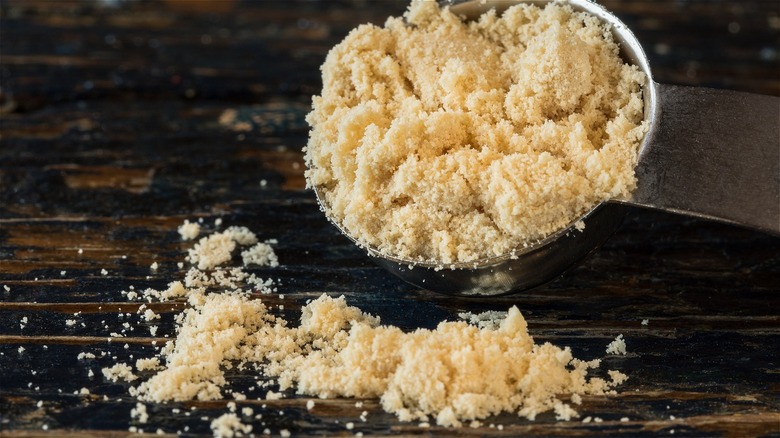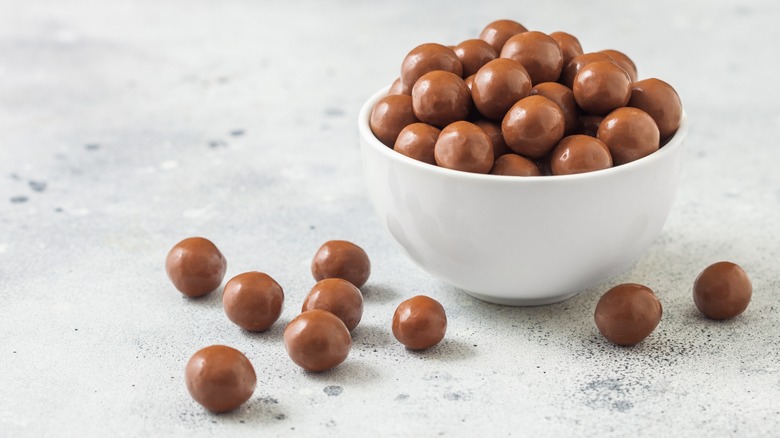Malt Powder Vs Malted Milk Powder: What's The Difference?
Malt milkshakes, Whoppers candy, Ovaltine, and beer all share malt as an ingredient, but not the same exact type of malt. There's malt powder, and then there's malted milk powder. While most people don't know this, there's actually quite a big difference between the two. And it's important to keep the differences in mind, as these ingredients — unlike butter and margarine — can't be used interchangeably.
Britannica defines malt as a cereal grain product "used in beverages and foods as a basis for fermentation and to add flavor and nutrients." According to Stone Path Malt, the malting process involves three steps: soaking (steeping) the barley to "awaken the dormant grain," letting the grain germinate, and heating (kilning) the barley.
Making malted powder and malted milk powder involves this same process, but as the name implies, making malted milk powder requires at least one additional ingredient: milk. Milk solids, to be more specific, as Pastry Arts Magazine explains. So which foods use malted powder, and which use malted milk powder?
Malt powder and malted milk powder in food and beverages
Malt powder comes in two forms: diastatic and non-diastatic. Diastatic malt powder contains active enzymes, so it's often used to feed yeast during breadmaking and other forms of baking. It can also be used to add flavor and color to foods. Non-diastatic malt powder lacks active enzymes, so it's used primarily to add flavor (sweetness) or "glossy brown coloring to baked goods, sauces, and cereal" (via Fine Dining Lovers).
Malted milk powder — also known as malted milk — was invented by brothers William and James Horlick in the late 1800s. It was initially used as a supplement for people who were sick and for infants, per Los Angeles Times. This creation eventually led to the creation of malted milk tablets during the Great Depression, followed by malted milk.
Today, malted milk powder is used in a wide range of foods and beverages. According to Penny Stankiewicz, chef-instructor of pastry and baking arts at the Institute of Culinary Education, "malted milk powder can be added to any recipe where the toasty, nutty flavor [will] enrich it." (via Martha Stewart). This includes ice cream, chocolate cake, cookies, pancakes, custard, crème brûlée, and quick bread.
To recap, malt is made from barley to make malt powder, but if you add solid milk products to malt powder, it becomes malted milk powder. Both are used to add or enhance the flavor of certain foods and beverages.

